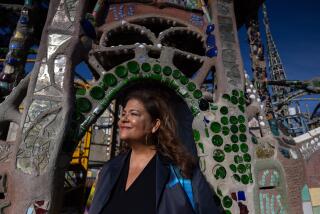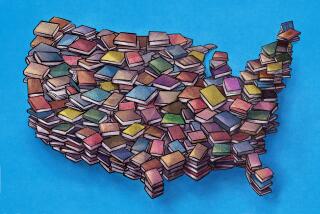A Nationâs Landmarks Resonate With Its Narrative Past
On the heels of one of the most disturbing undemocratic elections in American history, it may be hard to summon up the right frame of mind to appreciate a book like âAmerican Places,â a collection of essays by 28 eminent American historians on places that hold special resonance for them. Selections range from classic landmarks, like James M. McPhersonâs âGettysburg,â Merrill D. Petersonâs âMonticelloâ and Paul Boller Jr.âs âPennsylvania Avenue,â to less traditional sites, like David Brion Davisâ âThe Americanized Mannheim of 1945-1946,â Kevin Starrâs âThe Musso & Frank Grill in Hollywood,â Joel Williamsonâs âGraceland,â William E. Leuchtenburgâs âQueensâ and Edward L. Ayersâ âCyberspace, USA.â
âAmerican Places,â weâre told, was also conceived as a tribute to Sheldon Meyer, an editor at Oxford University Press who, during the last five decades, has been responsible for publishing many influential and exciting works of American history notable for combining a high standard of scholarship with a straightforward, nontechnical style accessible to the general reading public. The essays in this collection, more personal in tone, are just as accessible. Two in particular stand out like beacons helping to reorient us to the past and, hence, the future: David Hackett Fischerâs âBoston Commonâ and William H. Chafeâs âGreensboro, North Carolina.â
Ralph Waldo Emerson, walking across Boston Common, felt himself to be a âtransparent eyeballâ at one with the universe. Fischer sees in Boston Common a palimpsest of Bostonian--and American--history. In 1634, when the fledgling town of Boston bought the land, the denizens faced a choice: Should the town hold the land or divide it up among the inhabitants? Although men of âthe inferior sortâ were in favor of divvying it up, the more farseeing vision of John Winthrop and John Cotton prevailed: âWinthrop,â Fischer tells us, âwanted to keep the land intact . . . as a way of joining one person to another and one generation to the next.â
Chafeâs essay on Greensboro offers a revealing look at the realities of race relations in a Southern city that prided itself on its progressiveness. âUntil 1900,â he tells us, âblacks made up nearly 50% of all the skilled workers in Greensboro. . . . On seven of 19 streets . . . in 1880, black and white households existed side by side.â But then things changed. With the rise of the Populist movement, which sought âto forge an alliance based on common class interests--the poor (potentially white and black)--against the rich,â the ruling âBourbon Democratsâ played the race card, disenfranchised the blacks and enacted Jim Crow laws. The stateâs soi-disant âprogressiveâ governor, Charles B. Aycock, âimprovedâ education by establishing a system of segregated schools.
Under this new, paternalistic dispensation, blacks were deprived of their civil rights but offered occasional compensations (their own swimming pool, for instance) as long as they abided by the rules of the game. In the name of consensus and civility, the white elite fortified its power, while convincing itself and others of its âbenevolentâ intentions. The system broke down in 1960 when four young blacks sat down at a whites-only lunch counter, politely but uncompromisingly signaling they were no longer prepared to wait for others to grant them their inalienable rights.
Some of the other essays illuminate forgotten corners of history, like the arts-and-crafts movement that flourished in East Aurora, N.Y., or the âpig warâ that broke out on San Juan Island in Puget Sound. Others tackle larger matters, like the Lincoln-Douglas debates, the shaping power of nature as manifested in the Grand Canyon or the human power of courage demonstrated by the men who landed on Omaha Beach in Normandy: âFor many baby boomers, especially those of us who sidestepped service in Vietnam,â historian James C. Cobb reflects, âthe Normandy American Cemetery thus poses the question of whether, even when faced with a similar clear and direct threat to our way of life, we would have performed with anything approaching the valor that our parentsâ generation exhibited.â To visit American places in the company of these knowledgeable guides is to ponder questions like this one.
More to Read
Sign up for our Book Club newsletter
Get the latest news, events and more from the Los Angeles Times Book Club, and help us get L.A. reading and talking.
You may occasionally receive promotional content from the Los Angeles Times.








